
Walter Hungerford, 1st Baron Hungerford KG was an English knight and landowner, from 1400 to 1414 Member of the House of Commons, of which he became Speaker, then was an Admiral and peer.
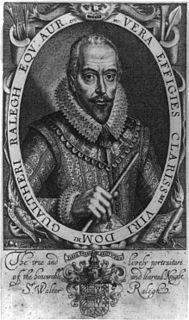
The Lord Warden of the Stannaries used to exercise judicial and military functions in Cornwall, England, in the United Kingdom, and is still the official who, upon the commission of the monarch or Duke of Cornwall for the time being, has the function of calling a stannary parliament of tinners. The last stannary parliament convened by a Lord Warden of the Stannaries sat in 1753.

Michael de la Pole, 2nd Earl of Suffolk was an English nobleman who supported Henry IV against Richard II during the turmoils of the late 14th century. He died during the Siege of Harfleur in 1415. He was the eldest son of Michael de la Pole, 1st Earl of Suffolk and Katherine Wingfield, daughter of Sir John Wingfield.
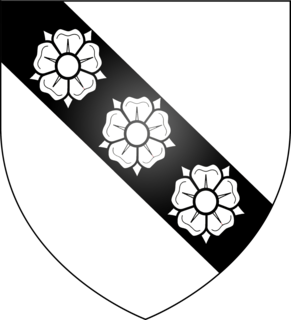
The Cary family is an English aristocratic family with a branch in Ireland. The earliest known ancestor of the family is Sir Adam de Kari who was living in 1198. Sir John Cary purchased the Manor of Clovelly in the 14th century and established the family's status as members of the landed gentry. Various branches of the family were ennobled in the late 16th and early 17th centuries as Baron Hunsdon and Viscount Falkland.
Margaret Grey was a Cambro-Norman noblewoman, the daughter of Reginald Grey, 3rd Baron Grey de Ruthyn, a powerful Welsh Marcher Lord, who was the implacable enemy of Owain Glyndŵr.
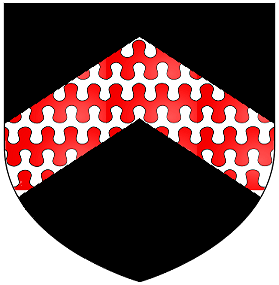
Sir William Hankford of Annery in Devon, was an English lawyer, and Chief Justice of the King's Bench from 1413 until 1423.

Sir George Carey, of Cockington in the parish of Tor Mohun in Devon, England, was Lord Deputy of Ireland from May 1603 to February 1604.

Sir Maurice Russell of Kingston Russell, Dorset and Dyrham, Glos. was an English nobleman and knight. He was a prominent member of the Gloucestershire gentry. He was the third but eldest surviving son and heir of Sir Ralph Russell (1319–1375) and his wife Alice. He was knighted between June and December 1385 and served twice as Knight of the Shire for Gloucestershire in 1402 and 1404. He held the post of Sheriff of Gloucestershire four times, and was Coroner and Justice of the Peace, Tax Collector and Commissioner of Enquiry. His land holdings were extensive in Gloucestershire, Somerset, Dorset, Berkshire and Buckinghamshire. He was descended from an ancient line which can be traced back to 1210, which ended on the death of his son Thomas, from his second marriage, as a young man without male issue. Most of his estates, despite having been entailed, passed at his death into the families of his two daughters from his first marriage.

Sir Philip Courtenay, of Powderham, Devon was the fifth son of Hugh Courtenay, 10th Earl of Devon (1303-1377). He was the founder of the cadet dynasty known as "Courtenay of Powderham", seated at the manor of Powderham, until then a former Bohun manor of little importance, whilst the line descended from his elder brother, the Earls of Devon of the mediaeval era, continued to be seated at Tiverton Castle and Okehampton.

Sir Hugh I Courtenay, of Boconnoc in Cornwall and of Haccombe in Devon, was Sheriff of Devon for 1418/19 and was thrice elected knight of the shire for Devon in 1395, 1397 and 1421. He was a grandson of Hugh de Courtenay, 2nd/10th Earl of Devon (1303–1377), was the younger brother of Edward de Courtenay, 3rd/11th Earl of Devon (1357–1419), "The Blind Earl", and was the grandfather of Edward Courtenay, 1st Earl of Devon (d.1509), KG, created Earl of Devon in 1485 by King Henry VII. He was the link between the senior line of the Courtenay Earls of Devon made extinct following the Battle of Tewkesbury in 1471 and the post-Wars of the Roses creation of a new Earldom for his grandson made in 1485 by King Henry VII.
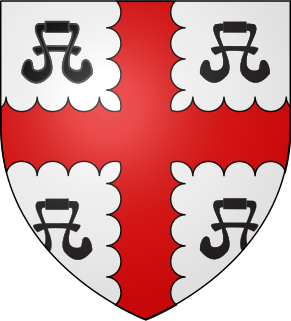
William Bourchier (1407–1470) jure uxoris 9th Baron FitzWarin, was an English nobleman. He was summoned to Parliament in 1448 as Baron FitzWarin in right of his wife Thomasine Hankford.
Powderham is a former manor on the coast of south Devon, England, situated within the historic hundred of Exminster, about 6 miles (9.7 km) south of the city of Exeter and adjacent to the north-east of the village of Kenton. It consists in part of flat, formerly marshy ground on the west bank of the River Exe estuary where it is joined by its tributary the River Kenn, the site of Powderham Castle, originally the fortified manor house of Powderham. On the opposite side of the Exe is the small village of Lympstone and almost opposite is Nutwell Court in the parish of Woodbury, formerly the castle or fortified manor house of the powerful mediaeval Dynham family.

Sir Richard Hankford (c.1397–1431) was jure uxoris feudal baron of Bampton and baron of part of the feudal barony of Barnstaple, in Devon.

Sir John Cary, of Devon, was a judge who rose to the position of Chief Baron of the Exchequer (1386–88) and served twice as Member of Parliament for Devon, on both occasions together with his brother Sir William Cary, in 1363/4 and 1368/9.

Sir Philip Cary of Cockington, Devon, was Member of Parliament for Devon in 1433.
The Manor of Clovelly is a historic manor in North Devon, England. Within the manor are situated the manor house known as Clovelly Court, the parish church of All Saints, and the famous picturesque fishing village of Clovelly. The parish church is unusually well-filled with well-preserved monuments to the lords of the manor, of the families of Cary, Hamlyn, Fane, Manners and Asquith. In 2015 the Rous family, direct descendants via several female lines of Zachary Hamlyn (1677–1759) the only purchaser of Clovelly since the 14th century, still own the estate or former manor, amounting to about 2,000 acres, including Clovelly Court and the advowson of the parish church, and the village of Clovelly, run as a major tourist attraction with annual paying visitor numbers of about 200,000.

Sir John Wadham (c.1344–1412) was a Justice of the Common Pleas from 1389 to 1398, during the reign of King Richard II (1377–1399), selected by the King as an assertion of his right to rule by the advice of men appointed of his own choice, and one of the many Devonians of the period described by Thomas Fuller in his Worthies of England, as seemingly "innated with a genius to study law".
Sir Robert I Hill, sometimes written Hull, was an English politician and judge from the West Country.
Sir Robert Chalons was an English courtier, soldier, administrator and politician from Devon.
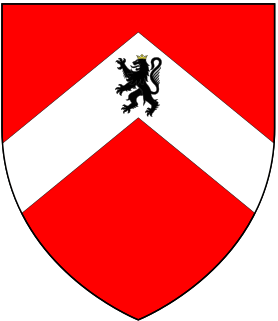
Sir Thomas II Brooke (c.1355-1418) of Holditch in the parish of Thorncombe in Devon and of la Brooke in the parish of Ilchester in Somerset, was "by far the largest landowner in Somerset" and served 13 times as a Member of Parliament for Somerset. He was the first prominent member of his family, largely due to the great wealth he acquired from his marriage to a wealthy widow. The monumental brass of Sir Thomas II Brooke and his wife survives in Thorncombe Church.













